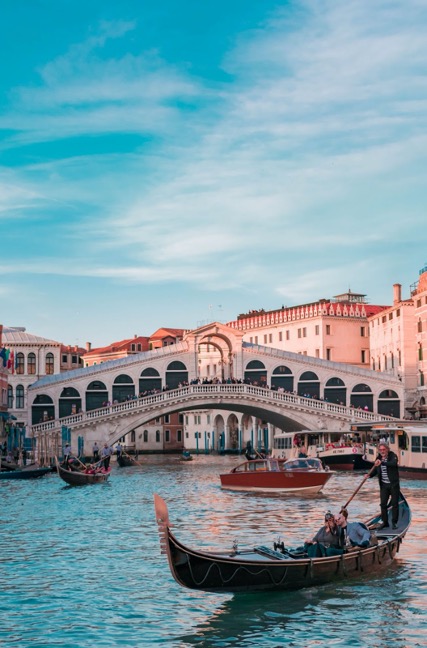All You Need to Know before Booking Your Trip to Italy
2021.11.21

Image Credit: Damiano Baschiera, Unsplash
After battling a third wave of the COVID-19 for a few months, Italy is now in an emergency state. As the country has shown positive results, the emergency condition is projected to end by 2021.
Due to the spread of the virus and its various strains, the country has made a few changes to its requirements for entering the country. If you’re planning to visit Italy during the pandemic, here is what you should know and expect.
Which Countries' citizens are permitted to enter Italy?
The Italian border reopened in January 2021 after being closed throughout the winter holidays. Two categories of countries are currently allowed to enter Italy— those from Europe and those from outside Europe.
Italy allows entrance to most European nations, specifically Austria, Belgium, Bulgaria, Croatia, Cyprus, Denmark, Estonia, France, Finland, Germany, Greece, Hungary, Ireland, Iceland, Latvia, Lithuania, Liechtenstein, Luxembourg, Monaco, Malta, the Netherlands, Norway, Portugal, Poland, Czech Republic, Romania, Slovenia, Slovakia, Spain, Sweden, and Switzerland.
Europe entry requirements for Italy include showing the COVID-19 Certificate, which confirms whether the travelers have been vaccinated, recovered, or have a negative COVID-19 test result. The 5-day quarantine for these countries was lifted on May 17.
However, a negative COVID-19 test result carried within 48 hours before arrival and a 5 day self-isolation period are necessary for visitors who have stayed and transited from the United Kingdom, Northern Ireland, Gibraltar, the Isle of Man, and the Channel Islands.
Travelers arriving in Italy from the following third countries are also permitted entry: Albania, Saudi Arabia, Armenia, Australia, Azerbaijan, Bosnia and Herzegovina, Brunei, Canada, United Arab Emirates, Japan, Jordan, Lebanon, Kosovo, Moldova, Montenegro, New Zealand, Qatar, United Kingdom of Great Britain and Northern Ireland, Republic of Korea, Republic of North Macedonia, Serbia, Singapore, United States of America, Ukraine, Taiwan.
All of the countries mentioned above are on Italy's so-called List D. According to current Italian regulations, travellers arriving in Italy from one of the countries mentioned must fill out a passenger locator form, undergo COVID-19 testing within 72 hours of arrival, and provide a Digital COVID-19 Certificate or an equivalent document. Those who do not fulfill these conditions must remain self-isolated for 5 days after entering Italy.
Travellers from Japan, Canada, and the United States are also permitted to enter Italy under the same conditions. They must present a passenger locator form, a negative test result obtained within 72 hours, and one of the EU Digital COVID certificates listed below:
· Vaccination certificate
· Recovery certificate
· Evidence of a negative COVID-19 test result
What to expect when travelling to Italy?
Italy has classified its areas to prevent the spread of the pandemic. At the moment, all regions of Italy are on the white list, which implies that restrictions applied are now eased throughout the country. The white zone regions, where there have been less than 50 infection cases per 100,000 people, are practically back to normal.
Nonetheless, when taking public transportation in Italy, tourists must wear a mask at all times. However, the obligation to wear a mask when outside has been lifted. Furthermore, everyone is obligated to maintain a distance of at least one metre. Only high-speed trains are exempt from social distancing regulations.
Since Monday, October 11, cultural venues have been authorized to operate at full capacity, which means that the number of people able to attend public and private events at theatres, cinemas, and music venues is no longer limited.
It was also announced that the capacity of sports stadiums would be increased to 60% for indoor events and 75% for outdoor events. Furthermore, the capacity of nightclubs has increased to 50% for indoor spaces and 75% for outdoor spaces.
Restaurants, bars, and other businesses are also open to the public as long as safety precautions are taken.
Since Italy is now "white," locals and visitors alike can take advantage of a wider range of activities and destinations. However, the authorities have stated that everyone must have a Green Pass to participate in any of the events mentioned above.
More Articles
Copyright © Fooyoh.com All rights reserved.